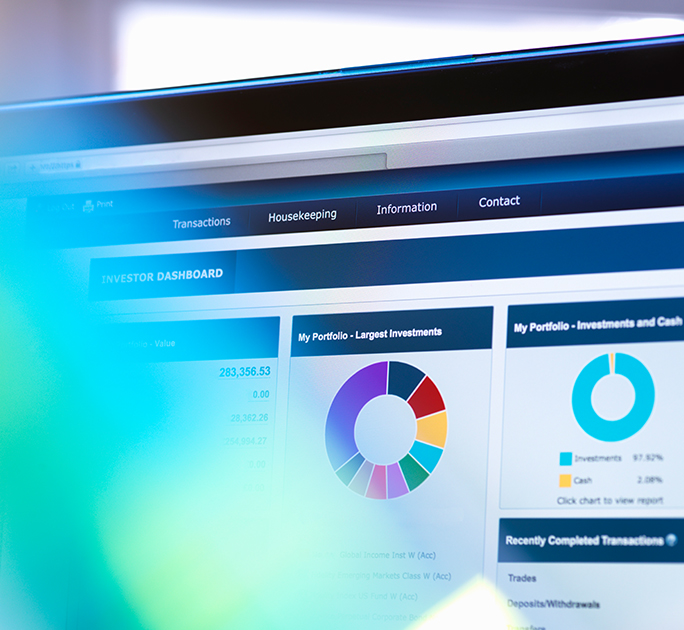Investing with SRS funds
By Navin Sregantan
![]()
If you’ve only got a minute:
- Invest your Supplementary Retirement Scheme (SRS) funds for potentially higher returns.
- Your investments are deposited into your SRS account, and investment gains are tax-free unless you withdraw.
- Start your investment journey early to enjoy the power of compounding.
![]()
Many of us are aware that inflation erodes our purchasing power, but often underestimate its impact on retirement. Coupled with rising healthcare costs and the increasing life expectancy of Singaporeans, planning for a comfortable retirement has become more crucial.
This requires a long-term strategy of diligent saving and wise investing, starting early in our careers, to outpace inflation and build a secure financial foundation.
In February 2025, DBS published a research paper that focused on the importance of retirement planning, including the significant advantages of investing early to grow our savings over the long term.

The impact of delaying investment is significant. Assuming a 5% annual return, a 25-year-old aiming for S$1.3 million in retirement (at age 65), needs to invest S$850 monthly. If one only starts saving for retirement at 45, this monthly figure is much higher at S$3,160.
While a significant jump, do not feel discouraged as there are ways to navigate this and build a comfortable retirement. One example is the Supplementary Retirement Scheme (SRS) which lets you grow savings via investing your SRS contributions and offers tax advantages that can help you reach your retirement goals faster.
Read more: Preparing for a rewarding retirement
What is SRS?
Introduced in 2001, SRS is a voluntary scheme to encourage individuals to save for retirement and one that complements your Central Provident Fund (CPF) savings.
Each year, contributions to SRS of up to S$15,300 for Singapore citizens and PRs and up to S$35,700 for foreigners are eligible for tax relief. In other words, you are incentivised to save for retirement by getting a tax relief on funds specifically earmarked for your retirement expenses.
With SRS, you may be able to make tax-free withdrawals of S$40,000 annually over 10 years (assuming total SRS balance of S$400,000), starting from the official retirement age (currently age 63) that was in effect when you made your first SRS contribution. This means that even if the official retirement age changes later, your SRS withdrawal age remains the same.
If you withdraw any amount before your retirement age, the full withdrawal will be taxed, and you'll also incur a 5% penalty.
SRS continues to gain popularity, where in just 3 years (from December 2021 to December 2024), the number of SRS accounts soared 62% from 288,793 to 466,849. Meanwhile, contributions saw significant growth, rising 43% from S$14.36 billion to S$20.58 billion.
Due to its personal income tax relief feature, some view SRS primarily as a tax-relief tool. However, merely leaving SRS funds idle also hurts the value of your hard-earned savings, as cash balances in your SRS account earn just 0.05% per annum (p.a.) in interest.
This is significantly lower than Singapore's average yearly inflation rate of 1.5% from 2014 to 2024, meaning S$100 today would be worth only S$85 in 10 years’ time.
As of December 2024, S$3.9 billion (19%) of the S$20.58 billion in total SRS contributions remain uninvested. While this is down from 24% in 2021, indicating increased awareness of investment opportunities, it still represents a substantial sum.

Investing with SRS
To maximise the growth potential of your SRS savings, consider investing them in a diverse range of investment products tailored to your risk tolerance. Doing so offers the opportunity to outperform prevailing interest rates and significantly enhance your retirement nest egg.
Here’s what you can invest your SRS savings in:

By investing, even in low-risk investments, you can get a better return than the prevailing interest rate and grow your retirement nest egg, or at the very least, inflation matching returns so the value of your savings is not eroded over time.
There are also other investment products, from wealth accumulation options like endowment plans to traditional investments like unit trusts and exchange-traded funds (ETFs), to maximise your SRS returns.
Here are some practical options to help you confidently grow your retirement savings and build a secure financial future.
Investing in SSBs
Unlike CPF funds, your SRS savings can be invested in Singapore Savings Bonds (SSBs). Backed by the Singapore Government, SSBs are considered among the safest investments available due to their high creditworthiness and extremely low default risk.
They offer a step-up interest rate, meaning your returns increase over time. Furthermore, SSBs provide flexibility, allowing penalty-free redemption any month. You are guaranteed to receive your full principal upon redemption, eliminating any risk of capital loss.
For example, a S$10,000 SRS investment in the January 2025 SSB tranche would yield S$2,870.25 by maturity in 2035, which is an effective annual return of 2.86%.
Even with redemption after just 3 years, the annual return would still be 2.79%, significantly exceeding the 0.05% earned on uninvested SRS funds.
Here’s how you can invest with SSBs:

Do note that there is a S$2 fee for each application and redemption for SSBs, all other fees are waived. Returns and interest payments are credited directly back to your SRS account.
Read more: Investing in SSBs
Investing in ETFs
SRS funds can also be invested in ETFs, which offer diversified exposure to market indices like the US’ S&P 500 Index or Singapore's Straits Times Index (STI).
Using SRS funds for investing in ETFs can be advantageous. While cash purchases of ETFs tie up liquid assets needed for emergencies, SRS funds are already earmarked for long-term retirement goals.
Furthermore, the pool of ETFs that you can invest your SRS balances is larger compared to investing your CPF Ordinary Account (CPF-OA) monies, which is limited to 6 Singapore-listed ETFs.
SRS allows access to a broader range of Singapore-listed ETFs, including those tracking the S&P 500 or the Chinese equity market.
To get started, link your SRS account to your DBS Vickers Online account, following which you can select SRS as the desired ‘Investment Type’, by following the steps below.
Returns and dividends you receive from your investments in stocks and ETFs will be credited directly back into your SRS accounts respectively.

Read more: How to start investing in ETFs
Investing in unit trusts
Investing your SRS funds in unit trusts can be a strategic way to enhance your retirement nest egg. While unit trusts are similar to ETFs in that money is pooled from multiple investors to invest in a diversified portfolio of assets, unit trusts are managed by investment professionals.
These assets commonly include stocks, bonds, or a combination of both, spread across different geographical markets and industries to mitigate risk. This offers investors the advantage of professional management and greater diversification, even with smaller amounts of capital.
Simply log in to DBS digibank and navigate to the “Invest” tab and “Unit Trust” drop-down. You can filter the list of unit trusts for those that can be purchased using SRS.
Do take note that the returns and dividends you receive from your investments in unit trusts will be credited directly back into your SRS accounts.

Read more: Top performing CPFIS funds in 2024
Insurance products
Your SRS funds can be used to invest in single-premium insurance products like endowments or annuity plans.
An advantage of using SRS funds for annuities is that the 10-year withdrawal period limit for SRS accounts does not apply. For life annuities, 50% of the annuity payments are subject to tax each year, for as long as you receive payments. This allows you to receive annuity payments for life, without the 10-year withdrawal limit.
However, insurance products purchased with SRS funds have some drawbacks. Returns are generally low, and these products often require larger sums for investment and have extended lock-in periods.
Also, for single-premium insurance products like endowment plans, the life coverage (including total and permanent disability benefits) is capped at 3 times the premium.

You can get single-premium insurance policies using your SRS monies, which can be purchased online via digibank.
Dividend returns for SRS investments
The SSBs, ETFs, unit trusts, and other investments that you purchase will be deposited into your SRS account.
Similarly, any distribution or dividend payouts and bond coupons, and proceeds from investment sales, will also be credited back into your account.
How about investing with CPF?
While most people will consider the monies in your CPF-OA and SRS separately, its best that you do not as you have to think of them as retirement sources of funds.
It is key to recognise that both schemes are meant to fund your retirement lifestyle and expenses. And so, we consider them together so your money can work as hard as you are.
These 2 schemes should be viewed as complementary to each other. SRS is a voluntary scheme that can complement your CPF savings. At the same time, SRS contributions also help you lower your taxable income.
In summary
Ready to supercharge your retirement savings? Don't let your SRS funds sit idle.
Start investing today and unlock the potential for tax savings and faster growth, bringing your retirement goals within closer reach.
Remember, your SRS funds are designed to supplement your other retirement nest egg, not replace it.
Before diving into investment options, assess your risk tolerance. Factors like your age, emergency savings, and investment experience will shape your investment choices and help you build a portfolio that aligns with your individual needs and long-term financial goals.
Ready to start?
Start planning for retirement by veiwing your cashflow projection on Plan tab in digibank. See your finances 10, 20 and even 40 years ahead to see what gaps and opportunities you need to work on.
Speak to the Wealth Planning Manager today for a financial health check and how you can better plan your finances.
Disclaimers and Important Notice
This article is meant for information only and should not be relied upon as financial advice. Before making any decision to buy, sell or hold any investment or insurance product, you should seek advice from a financial adviser regarding its suitability.
All investments come with risks and you can lose money on your investment. Invest only if you understand and can monitor your investment. Diversify your investments and avoid investing a large portion of your money in a single product issuer.
Disclaimer for Investment and Life Insurance Products
Deposit Insurance Scheme
Singapore dollar deposits of non-bank depositors and monies and deposits denominated in Singapore dollars under the Supplementary Retirement Scheme are insured by the Singapore Deposit Insurance Corporation, for up to S$100,000 in aggregate per depositor per Scheme member by law. Monies and deposits denominated in Singapore dollars under the CPF Investment Scheme and CPF Retirement Sum Scheme are aggregated and separately insured up to S$100,000 for each depositor per Scheme member. Foreign currency deposits, dual currency investments, structured deposits and other investment products are not insured.








That's great to hear. Anything you'd like to add? (Optional)
We’re sorry to hear that. How can we do better? (Optional)